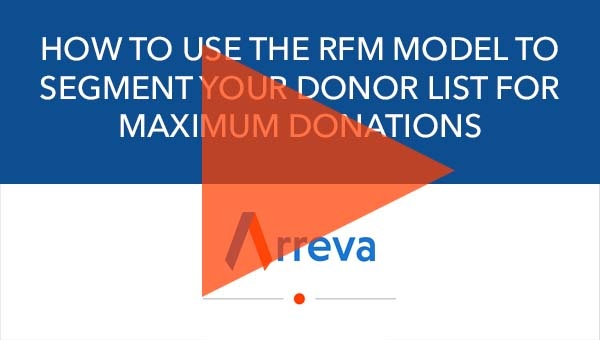Leveraging RFM Analysis for Prospect Management that Gets Results

Let’s talk about data analysis and how it affects the bottom line at your nonprofit. Of course, there are many data that you can analyze, so let’s look at it from the perspective of identifying your top donors. If you’re using prospect management software, you may be thinking, “I’ve got all this information, but what should I focus on?”
What really matters when it comes to pinpointing your major donors are three factors: how recently they’ve donated to your organization, how frequently they’ve given to your nonprofit, and how much they can donate to your cause.
Thus, Recency, Frequency, and Monetary Value (RFM) analysis is an effective method that nonprofits can use to organize donor history data in a way that maximizes fundraising efforts and optimizes moves management. Here are four reasons grouping donors based on RFM scores improves prospect management and increases donations.
Optimized Marketing Campaigns
RFM analysis gives you a better understanding of your prospects, which allows you to send them more relevant campaigns. The insights you gain show you how donors behaved in the past, which can inform how you approach them in the future. For example, if Mrs. Jones donated $500 last year, don’t send her the same campaign that you send to John, who only donated $30 last year. Tailoring your campaigns based on donor history results in more clicks and more donations.
Stronger Donor Relationships
When used effectively, RFM analysis allows you to cultivate relationships you have with your existing donors and retain your best donors. By sending optimized marketing campaigns, you’ve appealed to their interests and preferences, which makes them feel even more connected to your organization. Donors with this kind of connection are more likely to set up recurring donations, answer feedback surveys, volunteer, and even become peer-to-peer fundraisers.
Smarter Priorities
The segments of donors created from an RFM analysis give you a clearer picture of who and what to prioritize. Which donors are you about to lose but can be won with a simple email? Which ones should you target when you need larger gifts? Focus your resources on the most important prospects and capture the at-risk ones. Then, figure out what they care about most and incorporate those insights into your communications with them. Evaluate and redesign your prospect management process, if necessary. If your best donors prefer to give once at the end of the year, spend more of your time on designing a campaign for an annual event than on a monthly newsletter.
Efficient Prospect Management
Speaking of time, using RFM data to inform moves management saves lots of time and allows you to work more efficiently. You can easily choose the appropriate moves for each segment of prospects and assign team members to work on different segments. RFM analysis also cuts costs, since you’re no longer exhausting funds on emails, direct mail, and paid social ads sent to your entire donor list. You only spend as much as you need, and get better results!
Conducting an RFM analysis of your donor database advances your fundraising to the next level. By grouping donors based on past giving behaviors, you can optimize your marketing campaigns, strengthen donor relationships, create smarter priorities, and develop an efficient prospect management process. Integrating this data with donor management technology allows you to enhance the way you target prospects and achieve your fundraising goals.


